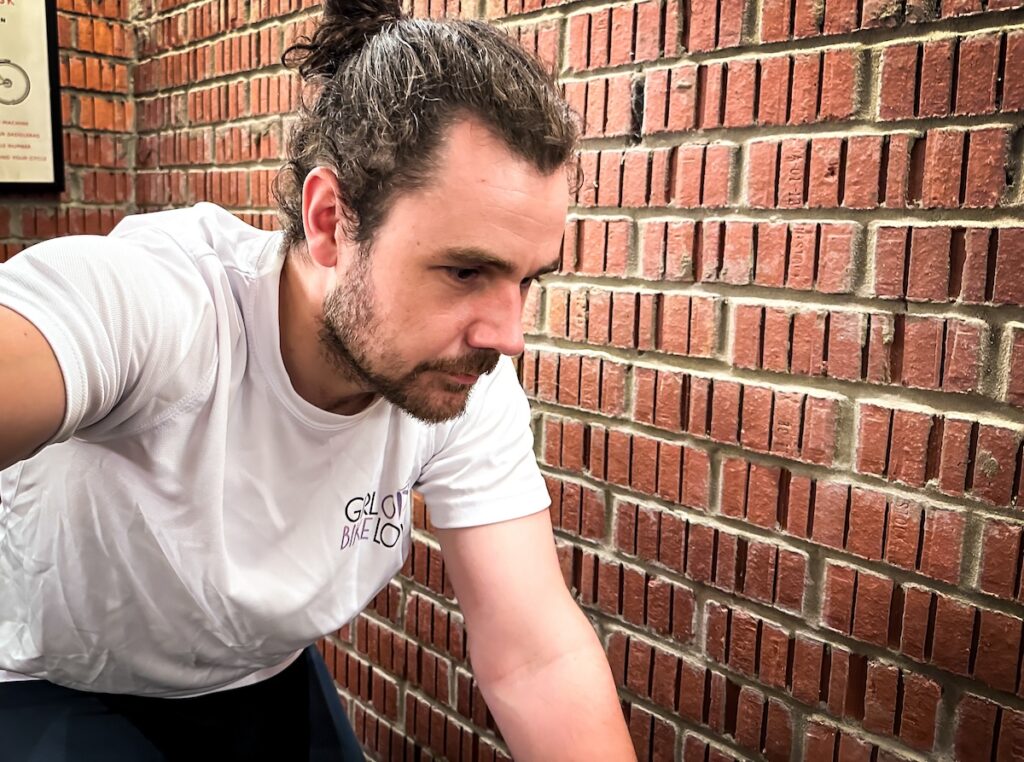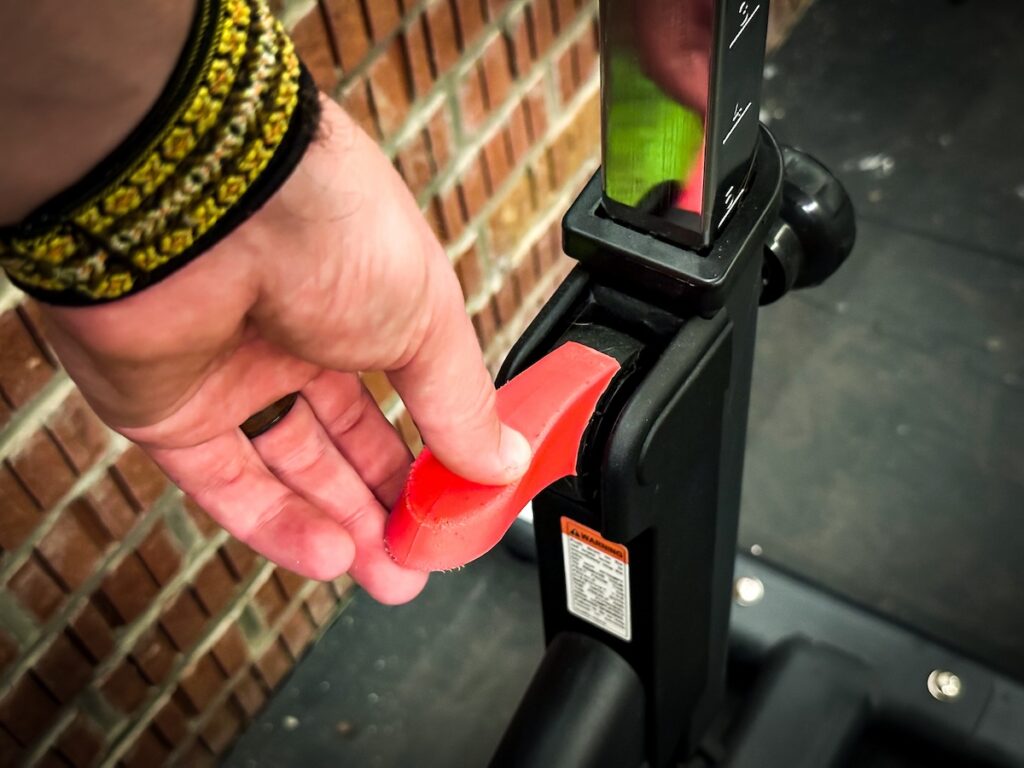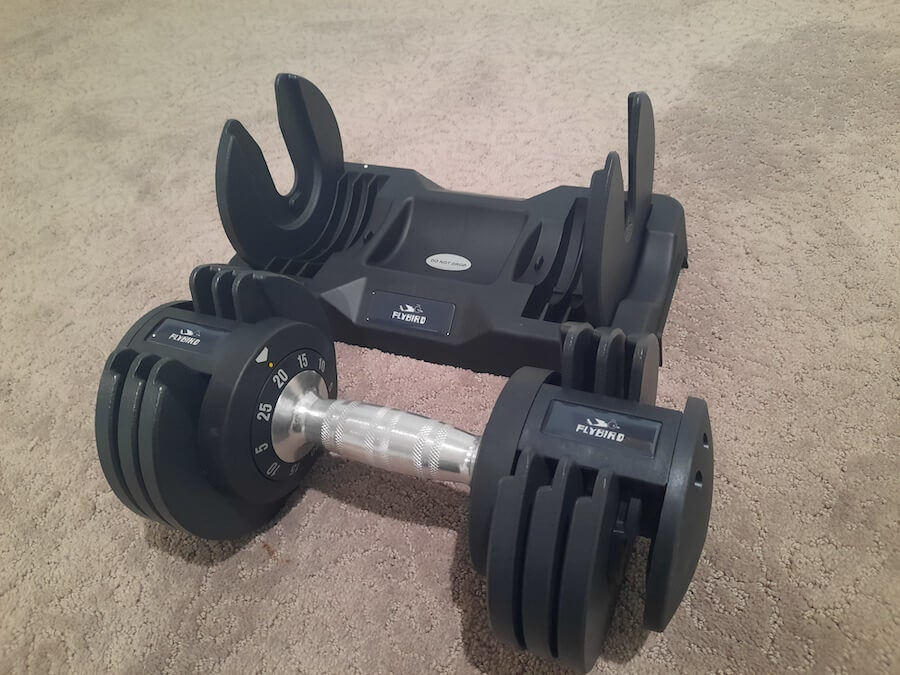Indoor cycling is a great way to stay in shape, and for many, it easily becomes part of their daily routine. I completely understand why, and it personally adds so much value to my day. I often get asked at Girl Bike Love, “How often should I ride my bike indoors?”
In this article, I am going to be answering that question. Unfortunately, it’s not as simple as a certain amount of days is right. It comes down to much more, and a lot of consideration needs to be made depending on your goals and who you are.
Quick Answer: How Many Times a Week Should You Spin?
It really depends on your experience and how comfortable you are on the bike.
- Beginners (1–3 sessions per week)
Start with one to three classes a week. This helps your body adapt to the workouts, gives you time to recover, and still lets you see steady progress.
- Intermediate Riders (2–4 sessions per week)
If you’ve been riding for a while and feel more confident, two to four classes a week is ideal for building fitness and endurance.
- Experienced Riders (3–5 sessions per week)
For those who ride regularly and handle higher intensity, three to five classes a week work best. This allows you to mix up your training with interval and endurance rides while avoiding burnout.

My Experience With Indoor Cycling
I’m Robbie. I’ve been an indoor cycling instructor for many years and a personal trainer to many cyclists. I often make plans for people who want to become better indoor cyclists and also help with knowledge for new instructors.
I know a lot about indoor cycling, and I have even been lucky enough to work with some big brands when it comes to indoor training that requires expert feedback. With all this experience, I can help you become better and stronger.

Factors Affecting How Often You Should Ride Your Indoor Bike
How often you should ride your bike comes down to many different things, and next, I will speak about the main aspects. Here’s what you need to know:

How Often Should You Ride Your Indoor Bike?
Now, for the exciting part, how often should you ride your bike? Well, as I have discussed above, it comes down to many factors. For me, it comes down to experience more than anything and how confident an indoor cyclist you are. Here are my thoughts:
Beginner Indoor Cyclists
If you are a beginner cyclist, then I recommend aiming for 1 to 3 sessions per week. This is ideal for getting used to riding indoors, in my opinion. There are many reasons for this, and some might find it too little or even too much.
I like 1 to 3 sessions for a beginner indoor cyclist because it offers a lot of recovery between sessions, it doesn’t overload the rider with too much to do, it’s enough to make great progress with your goals but also not make you feel too uncomfortable with the riding load.
Intermediate Indoor Cyclists
For those who have some experience but don’t consider themselves an expert, I have intermediate cyclists. These I recommend from 2 to 4 sessions per week. This is the ideal amount for someone who wants to build fitness and get better.
Intermediate cyclists will benefit from 2 to 4 sessions per week because it offers enough load to improve depending on the sessions you are doing and enough rest to be ready for each one.
Expert Indoor Cyclists
When it comes to expert indoor cyclists who are very experienced and ride a bike regularly as their main form of exercise, I recommend a total of 3 to 5 sessions per week. This might sound like a lot, but for someone who might be going to a lot of studio sessions or has a bike at home, it’s perfect.
When it comes to 3 to 5 sessions per week, it will be enough to mix in lots of different types of training, such as high-intensity interval training, endurance sessions, and even some testing. The legs should have enough recovery for an experienced rider, and it will keep you riding a lot.

It’s All About Feel More Than Anything
Above are my recommendations as an avid indoor cyclist and instructor, but ultimately, it comes down to how you feel. We are all built differently and often have very different goals. Some indoor cyclists could be experts but might only want to do 2 sessions a week, while a beginner might want to do 4 sessions.
The best route to go down is to go on how you feel. If you get on the bike and you’re achy and tired often, then maybe you’re doing too much. If you find yourself itching to go on more and recover quickly, you might not be doing enough.
Not Just Physical But Mental
It’s good to understand that it’s not just a physical feeling but also a mental feeling. Just because you are physically able to ride five times a week doesn’t mean you need to. If you don’t feel like jumping on the bike very regularly, you don’t have to.
This is a problem I see with many indoor cyclists. They often feel they are not doing enough just because they have recovered quickly, often making people give themselves a lazy impression of their work.
Just because you are fully recovered doesn’t mean you need to be back on the bike. Don’t feel guilty about that, and get back on track when you are ready to rock and roll and give your 100%.

Finding What’s Right For You
The process of finding what’s right for you can be very challenging, and my best advice is to experiment with different types of sessions and different amounts of workloads. You will find a sweet spot for you going in this direction.
It will often change as your life changes. You might get busier at work, find that you are more socially going out often, or even just want to spend some extra time relaxing instead of training.
Spinning & Weight Loss
Besides being fun, many people take up indoor cycling to improve their health and perhaps shed a few pounds. Before we go any further, let’s test your knowledge. Do you think the ability to spot reduce (lose weight in a specific area only) is a fact or a myth?
Myth!
Unfortunately, spot reduction is just a fairytale, and we do not get to pick the areas where we lose body fat and improve body composition. Many of my clients ask if spinning can get rid of belly fat. The answer is that it can, but if you are losing belly fat, you are shedding inches from other places too.
Tip: The scale is not the only way to check your progress. I recommend tracking changes in your body composition and taking measurements to see how things are moving along.
If you desire to lose weight with cycling, below are some tips to maximize your efforts.
1. Set an Achievable Goal
Let’s be honest. Setting a goal of losing twenty pounds by the end of next week is not attainable. However, focusing on a slow and steady approach of losing 1-2 pounds per week is.
Remember that one pound is equal to 3,500 calories. Therefore, burning an additional 500 calories per day will equal one pound per week. Burning 500 calories could be accomplished in thirty minutes or take closer to an hour for some riders. Calorie expenditure during any activity is highly personalized as the number of calories someone burns is based on various factors, including height and weight.
2. Differentiate Your Workout
If you want cycling to be your main form of exercise and wish to ride more than three times per week, here are a couple of ways to change your training stimulus for you to consider.
Intensity & Duration
Adjusting your intensity is a fantastic way to amp up your workout, torch calories, and keep your body guessing. You can increase your intensity level on your bike by raising your resistance, increasing your cadence, or a combination of both.
How many calories you will burn during a workout will also be influenced by how long you are riding. For example, a 45-minute interval ride will crush more calories than a 20-minute interval session. Depending on the amount of time you have to ride and the daily goal you want to achieve, there is an intensity and duration combination to get you there. For instance, a 60-minute endurance ride might burn a similar amount of calories compared to a 30-minute interval ride.
If you are unsure how to change up your workouts on your own, there are plenty of apps with instructor-led workouts available, or simply pop into a local cycling studio for an inspiring class with a live instructor.
My Biking Schedule Example: There are some weeks that I might click in for 5-6 cycling workouts throughout the week, but I always focus on changing up my intensity. For example, I absolutely love interval classes, but I know I need to change my training stimulus to keep my body guessing and avoid injury. Therefore, I might perform three interval classes with an endurance or long ride class in between.
Add Weight Training Sessions
Cycling definitely helps build muscular strength and endurance, but it is beneficial to include weight training sessions in your weekly routine. Since cycling is primarily a lower body workout, you should incorporate an upper-body or total body workout a couple of times per week. If you want to add these workouts to the same workout session of riding on your bike, remember to complete your weight training first. This will help you to maximize your strength output.

3. Fuel Your Body the Right Way
When most people hear the word diet, they think it means cutting your calories to 1,200 per day and eating only green food, but the truth is that it describes what you eat. It doesn’t mean you need to deprive yourself. No matter how hard you work out, you can’t outwork a bad diet. However, focusing on whole foods and ditching processed items can easily make drastic improvements to your health. We recommend using a food journaling app to track what you are eating and to track your nutrients. My personal favorite is MyFitnessPal.

4. Catch Some ZZZ’s
In a recent sleep study, researchers found a relationship between higher body weight and lower hours of sleep logged at night. Sleep helps regulate hormones such as Ghrelin, which helps control how hungry you feel. So, aim for about 7 hours of sleep per night to help you reach your health and fitness goals.
A Final Note
When it comes to how often you should ride, it’s a very personal thing. Going on how you feel is a great way to go, and just let it build up to the number of sessions you want to do. Adding some logic and doing different types of sessions could bring you more training with less recovery.
It’s important to consider what you’re comfortable doing and how much time you want to spend on the bike. Thanks for taking the time to read our article. I hope it helped you with the information you needed.

